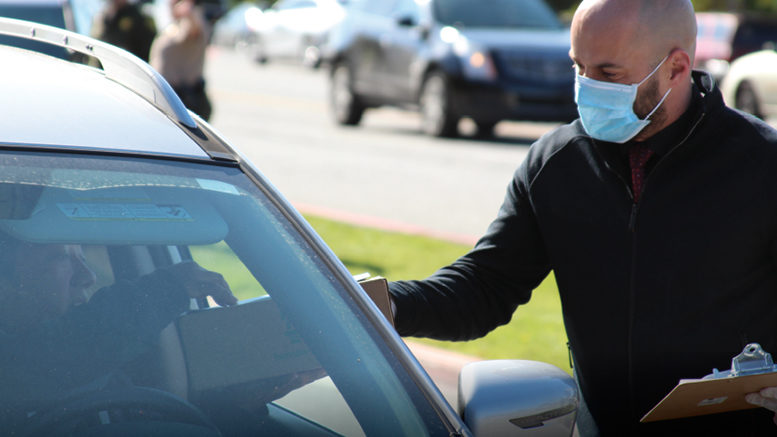Community colleges were on the long list of beneficiaries when the federal government in March passed the CARES Act. Given the length of the list, however, the money only stretched so far, and two-year colleges have been creative and judicious about how they spent their allocations.
To begin with, the money from the legislation came in “halves,” with 50% aimed toward direct aid to students, and 50% to the colleges to use for COVID-related expenses, such as personal protective equipment (PPE), Plexiglas dividers for classrooms, and technology and services needed for online instruction.
This is an excerpt from the October/November edition of the Community College Journal, which is published by the American Association of Community Colleges.
Beyond that, two-year colleges, in consultations with their districts and state systems, had discretion based on local and regional priorities. And with the economy cratering during to the pandemic-related shutdowns, they needed to invest with an eye toward continuing to provide education and training given the broadening educational needs of their students.
“Community colleges are going to be essential to the economic recovery of this commonwealth and this nation at large,” says Jeffrey Kraus, assistant vice chancellor for strategic communications for the Virginia Community College System (VCCS). “Where industries have been hit hardest, and jobs lost, people are going to be looking to us, especially our short-term training programs, to find their next opportunity. That should be on policymakers’ minds, not just for [the next] bill but for the next 12 to 18 months.”
State system role
State systems have helped their colleges understand the parameters of the CARES Act and how they can invest the money. Among the considerations were issues like determining which students were eligible, enrollment in the specified number of credit hours, and impacts of the move online, says Van Wilson, associate vice chancellor for student experience and strategic initiatives at VCCS.
“The other thing we provided was the technology methodology that would help them take a deep dive and help them disburse those resources in a short amount of time,” he says.
The main challenge for VCCS was that colleges understood the U.S. Department of Education guidelines on distributing the funds so institutions could relay money to students quickly, Wilson says.
“It was threading that needle to meet the intent of the legislation,” says Will Johnson, associate vice chancellor of finance. “It sounds very flexible, but you had to identify costs and expenditures. We were delivering a good bit of courses online, and we needed to identify those costs that are associated with moving from classroom instruction to online in a systematic manner, to make sure we remained as audit-ready as you possibly could.”
Another hurdle was ensuring that the amount of resources passed along to students made a meaningful impact and offset the costs they faced, Wilson says. “What’s the cost of an appropriate device that allows students to access the instructional information?” he says. “What would those students need to be successful when transitioning to online or virtual, in terms of course modality?”
Faculty training was another priority, given that most faculty throughout the Virginia system had been accustomed to in-person delivery, Johnson says.
In the districts
Community college districts similarly did not directly receive funds, although they were closer to the decision-making among their individual campuses. At the Los Angeles Community College District (LACCD), one district-wide decision for all nine colleges was to divide the CARES Act funding 75-25, with the majority going directly to students. Funds were based on enrollment.
“We supported as many students as possible, including DACA students who were initially given the same amount of emergency aid but from other funding sources,” says William Boyer, director of communications and external relations for LACCD.
Once litigation filed by the California Community Colleges system to remove anti-DACA criteria from the CARES Act succeeded, “We adjusted accordingly to use the CARES money for all students the way it was originally conceived,” he says.
Students had the option of taking direct cash aid, if that’s what they needed, or to obtain technology like Chromebooks or wireless hotspots, says Ryan Cornner, the district’s vice chancellor of educational programs and institutional effectiveness. A district cabinet group comprising representatives of the chancellor’s office and college presidents came to the consensus that students should receive three-quarters of CARES Act funding.
Each of the nine individual colleges will decide how to spend the remaining 25%, Cornner says.
“They’re working through their mechanisms and determining their needs locally,” he says. “It could be things like PPE, or other needs as it relates to health and safety.”
LACCD has leveraged other funding, including its own College Promise Program, to boost funding for students, who ended up getting about $300 apiece based on the CARES Act disbursements.
“We know that students are struggling,” Cornner says. “From surveys, we saw that half of students were reporting reduced or eliminated work hours. There’s been a high increase in mental health needs, particularly as it relates to anxiety.”
The district also has budgeted more than $1.6 million in faculty professional development on online education, spanning both the use of the software and online pedagogy, and it’s trained more than 1,000 faculty members on both, Cornner says.
“That’s not something that CARES is providing for; that’s something we recognized we needed to do,” he says.
The faculty identified more than 300 pieces of software needed for students’ use, ranging from broadly used programs like Adobe Creative Suite, to specific lab simulation software for courses like anatomy or chemistry, which require a license for students to use at home, Cornner says.
“That alone would be hundreds of thousands of dollars,” he says. “All of those are things we’re having to do, that we would not do under normal operating procedures, because we will not be able to do labs in real life.”

